MEDICINAL PLANTS FOUND IN THE PHILIPPINESAkapulko / Acapulco (Cassia alata)
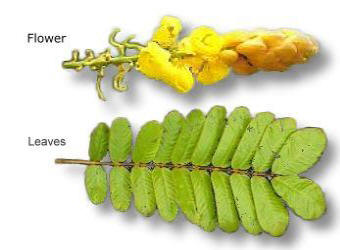
Akapulko or Acapulco in English is a shrub found throughout the Philippines. It is known under various names in different regions in the country. Locals call the plant katanda, andadasi, and palochina in Tagalog, Ilocos and in the Visayas regions, respectively. The shrub belongs to the family ofLeguminosae, and grows about one to two meters tall. It has thick branches and the leaves are embraced with 8 to 20 leaflets that are oblong-elliptical in shape. The flowers of the Akapulko have oblong sepals, and its fruits are tetragonal, which are also winged and glabrous. A medicinal herb that contains chrysophanic acid, a fungicide used to treat fungal infections, like ringworms, scabies, and eczema. Akapulko also contains saponin, a laxative that is useful in expelling intestinal parasites.
Herbal Medicine: Ampalaya (Momordica charantia)
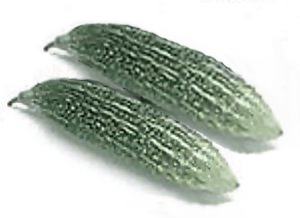 Ampalaya (Bitter Melon) with a scientific name Momordica charantia, is a climbing vine and the tendrils of which grow up to 20 centimeters long. This herbal plant belongs to the family of Cucurbitaceae, and it is a tropical as well as a subtropical vine. Ampalaya leaves are heart-shaped, which are 5 to 10 centimeters in diameter. The fruits of the ampalaya vine are fleshy green with pointed ends at length. It can never be mistaken for any other variety because its ribbed and wrinkled surface had always been ampalaya’s distinct physical structure. The bitter taste of the ampalaya fruit had also been the distinguishing factor from the rest of the fruits with medicinal value, and this is due to the presence of a substance known as momorcidin.
Ampalaya (Bitter Melon) with a scientific name Momordica charantia, is a climbing vine and the tendrils of which grow up to 20 centimeters long. This herbal plant belongs to the family of Cucurbitaceae, and it is a tropical as well as a subtropical vine. Ampalaya leaves are heart-shaped, which are 5 to 10 centimeters in diameter. The fruits of the ampalaya vine are fleshy green with pointed ends at length. It can never be mistaken for any other variety because its ribbed and wrinkled surface had always been ampalaya’s distinct physical structure. The bitter taste of the ampalaya fruit had also been the distinguishing factor from the rest of the fruits with medicinal value, and this is due to the presence of a substance known as momorcidin.
Ampalaya has been a folkloric cure for generations but has now been proven to be an effective herbal medicine for many aliments. Most significant of which is for Diabetes. The Philippine variety has proven to be most potent. Ampalaya contains a mixture of flavanoids and alkaloids make the Pancreas produce more insulin that controls the blood sugar in diabetics. Aside from Ampalaya's medicinal value, it is good source of vitamins A, B and C, iron, folic acid, phosphorous and calcium.

Atis is the Philippine name for Sweet Sop and Sugar Apple. Atis is a relative to custard apple and belongs to the Annona family. Atis is native to Central America, the Caribbean and northern South America. Atis was introduced to the Philippines during the Spanish times.
Atis is a small tree that grows between 10 to 20 feet high when fully matured with oblong leaves and green heart-shaped fruits with polygonal tubercles. The atis fruit has a white, sweet flesh and black seeds.
The Atis tree is easy to grow. Just plant a seed on almost any soil and atis will grow. However, it requires tropical or near tropical weather. When planted, Atis will begin to bear fruit in about a year's time. It will bear fruit about 3 times a year and the sweetest fruits are those borne during the summer months.
Food Value of Atis Fruit
|
Per 100g
|
Vitamins & Minerals
|
Per 100g
|
Calories
Water
Carbohydrates
Protein
Total dietary fiber
Fat
Total sugars
Tryptophan
Lysine
Methionine
|
91 g
70 g
22 g
2.0 g
2.0 g
0.60 g
15%
9 mg
60 mg
7.5 mg
|
Ascorbic Acid (Vitamin C)
Thiamine
Riboflavin
Niacin
Carotene
Ash
Phosphorus
Calcium
Iron
|
40 mg
0.12 mg
0.14 mg
0.80 mg
6 I.U.
1 mg
40 mg
30 mg
1.0 mg
|

Bawang or Garlic with scientific name Allium sativum, is a low herb, which only grows up to sixty centimeters high. Its leaves are flat and linear, with bulbs that consist of several tubers. This herb is one of the most widely used herbal medicines in the Philippines and can also be found commonly in the kitchen of Filipino households as it is used to spice up food preparations. The Philippine bawang or garlic variety is more pungent than the imported ones. Its medicinal properties have been known for a long time and have been especially proven during World War II when it was used to treat wounds and infections of soldiers. Garlic’s antibacterial compound known as allicin, saved many lives of the soldiers as this property prevented the wounds from being infected and developing into gangrene at a later stage by extracting the juice of bawang or garlic and applying to the wounds.
Bawang, sometimes spelled as bauang or in English, garlic is known as nature's antibiotic. Its juices inhibit the growth of fungi and viruses thus, prevent viral, yeast, and infections. The preliminary test conducted on this medicinal herb showed some positive results in the treatment of AIDS. Several clinical tests that followed and published studies have shown the efficacy of garlic in lowering cholesterol in the blood and is beneficial to the circulatory system of the body. Today, as more research is done on garlic, more medicinal and therapeutic properties become more evident. As of the present time, lowering of the blood pressure, reduction of platelet aggregation, and the boosting of fibrinolytic activities are among the list of herbal functions of garlic, which is supported by medical findings. Although more clinical studies are needed to support the contention stronger, marked improvements in benign breast diseases have been traced to make progress because of the regular intake of supplements, of which the primary ingredient is garlic.
Although controlled trials in terms of anti-cancer activities of garlic have been performed in medical research, it has been proven through population-based studies that substances contain in garlic help in reducing the risk of some types of cancer. These would include colorectal malignancies, and gastriccancer. Regular consumption of raw garlic has been proven to aid in many bleeding cases, especially those cases that are associated with procedures in surgeries and dental activities. All these considered, it appears that garlic have no concrete scientific basis to claim a significant effect in the level of glucose in our blood. It is remarkable to note though that the Philippine Department of Health has endorsed garlic as one of the top ten Philippine herbs with therapeutic value and the department recommends its use as an alternative herbal medicine in view of the positive results of thorough research and testing, which had been conducted on this herbal plant. Juice extracted from garlic bulbs can be used as tick and mosquito repellant when applied to skin.
Bad breath, due to the strong odor of garlic, is the most common side effect of taking this herb. Fresh garlic applications to the skin have been reported to cause skin burns and rashes. This goes true both for those who are in the initial stages of their garlic therapies, and those who consume it as an ingredient in food preparations.
Health Benefits of Bawang-Garlic:
• Good for the heart
• Helps lower bad cholesterol levels (LDL)
• Aids in lowering blood pressure
• Remedy for arteriosclerosis
• May help prevent certain types of cancer
• Boosts immune system to fight infection
• With antioxidant & antibacterial properties
• Cough and cold remedy
• Relives sore throat
• Aids in the treatment of tuberculosis
• Helps relieve rheumatism pain
• Relief of toothaches
• Kills skin fungus i.e. athlete’s foot
• With anticoagulant properties
Preparation of Bawang-Garlic:
• For disinfecting wound, crush and juice the garlic bulb and apply. You may cover the afflicted area with a gauze and bandage.
• For sore throat, peal the skin and chew for several minutes. Swallow the juice.
• For toothaches, crush then bite garlic.
• For athlete’s foot, soak feet in salty water then apply garlic juice. Do this 3X day for a week.
• Cloves of garlic may be crushed and applied to affected areas to reduce the pain caused by arthritis, toothache, headache, and rheumatism.
• Decoction of the bawang bulbs and leaves are used as treatment for fever.
• For nasal congestion, steam and inhale: vinegar, chopped garlic, and water.
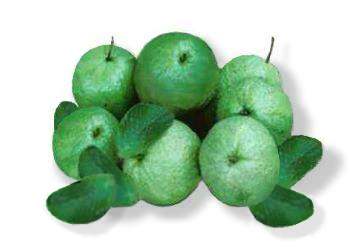
Bayabas or guava is a tropical plant, which is locally known for its edible fruit. In the backyards of Filipino homes in the country, this plant is commonly seen, and grown because of its many uses as fruit and as traditional remedy to treat various ailments. As shown by many research studies, almost all of the parts of this plant have medicinal qualities and value, and thus, making it as one of the most popular therapeutic plants in the Philippines. Bayabas is a small tree that can grow up to 3 meters tall with greenish-brownish smooth bark. The round globular bayabas fruit starts as a flower and is usually harvested and eaten while still green. The fruit turns yellowish-green and soft when ripe.
The bayabas fruit bark and leaves are used as herbal medicine. Its leaves decoction is recognized for its effectiveness to cure several ailments, including the treatment of uterine hemorrhage, swollenness of the legs and other parts of the body, of chronic diarrhea, and gastroenteritis, among others. The most common use of the leaves is for cleaning and disinfecting wounds by rinsing the afflicted area with a decoction of the leaves. In the same way, such leaves are being used to aid in the treatment of dysentery and the inflammation of the kidneys. The bark and leaves can be used asastringent. It can also be used as a wash for uterine and vaginal problems, and is good for ulcers. The medicinal uses of Bayabas appear infinite, as it is also a suggested natural cure for fevers, diabetes, epilepsy, worms, and spasms. The fruit, aside from being delicious, contains nutritional values with a very high concentration of vitamin A and vitamin C.
Uses of Bayabas :
• Antiseptic, astringent & anthelminthic
• Kills bacteria, fungi and ameba
• Used to treat diarrhea, nosebleeding
• For Hypertension, diabetes and Asthma
• Promotes menstruation
The fresh leaves are used to facilitate thehealing of wounds and cuts. A decoction (boiling in water) or infusion of fresh leaves can be used for wound cleaning to prevent infection. Bayabas is also effective fortoothaches. Note: Bayabas can causeconstipation when consumed in excess.
Preparation:
• Boil one cup of Bayabas leaves in three cups of water for 8 to 10 minutes. Let cool.
• Use decoction as mouthwash, gargle.
• Use as wound disinfectant - wash affected areas with the decoction of leaves 2 to 3 times a day. Fresh leaves may be applied to the wound directly for faster healing.
• For toothaches, chew the leaves in your mouth.
• For diarrhea, boil the chopped leaves for 15 minutes in water, and strain. Let cool, and drink a cup every three to four hours.
• To stop nosebleed, densely roll Bayabas leaves, then place in the nostril cavities.
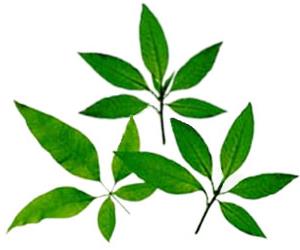 | |
Lagundi (scientific name: Vitex negundo) is a shrub that grows in the Philippines. It is one of the ten herbal medicines endorsed by the Philippine Department of Health as an effective herbal medicinewith proven therapeutic value. Commonly known in the Ilocos region as dangla, lagundi has been clinically tested to be effective in the treatment of colds, flu, bronchial asthma, chronic bronchitis, and pharyngitis. Studies have shown that Lagundi can prevent the body's production of leukotrienes, which are released during an asthma attack. Lagundi contains Chrysoplenol D, a substance with anti-histamine and muscle relaxant properties. Even in Japan, lagundi is becoming recognized as an effective herbal medicine, especially since researches have shown that it contains properties that make it an expectorant and it has been reported to function as a tonic as well. More than that, most of the parts of the lagundi plant have medicinal value.
The roots of this shrub are also used as treatment for rheumatism, dyspepsia, boils, and leprosy. The leaves, flowers, seeds, and root of Lagundi can all be used as herbal medicine. A decoction is made by boiling the parts of the plant and taken orally. Today, Lagundi is available in capsule form and syrup for cough. For its part, the flowers are recommended as a cardiac tonic, as cure for liver diseases, and other internal disorders such as diarrhea and cholera. The lagundi plant also has anti-inflammatory functions, and its cooling effects are ideal as treatment for skin diseases such as leprosy. Plant Description: The Lagundi plant can grow up to five meters tall. It can be described as a cross between a shrub and a tree with a single woody stem (trunk). One of Lagundi's distinctive features is its pointed leaves with five leaflets set like a hand. | |
Herbal Benefits of Lagundi:
• Relief of asthma & pharyngitis
• Recommended relief of rheumatism, dyspepsia, boils, diarrhea • Treatment of cough, colds, fever and flu and other bronchopulmonary disorders • Alleviate symptoms of Chicken Pox • Removal of worms, and boils |
Preparation & Use:
• Boil half cup of chopped fresh or dried leaves in 2 cups of water for 10 to 15 minutes. Drink half cup three times a day.
• For skin diseases or disorders, apply the decoction of leaves and roots directly on skin. • The root is specially good for treating dyspepsia, worms, boils, colic and rheumatism. |
| A decoction (boiling in water) of the roots and leaves of Lagundi are applied to wounds, and used as aromatic baths for skin diseases. Boiled seeds are eaten in order to prevent the spreading of toxins and venom from bites of poisonous animals. Juice extracted from the flowers of Lagundi plant is taken in as an aid for disorders like fever, diarrhea, liver disorders, and even cholera. While a decoction of the plant leaves is suggested to be taken by individuals to help increase the flow and production of milk, as well as to induce menstruation.
BotanyNiog-niogan is a large climbing, woody shrub reaching a length of 2 to 8 meters. Brown hairs give the younger parts a rusty appearance. Leaves are oblong to elliptic, opposite, 7 to 15 centimeters long, rounded at the base and pointed at the tip. Flowers are fragrant, tubular, showy, first white, then becoming red, reddish-purple or orange, exhibiting the range of colors in clusters, on the same flower stalk. Fruit is narrowly ellipsoid, 2.5 to 3 centimeters long, with five, sharp, longitudinal angles or wings. Seeds are pentagonal and black.
 Distribution- In thickets and secondary forests throughout the Philippines. Distribution- In thickets and secondary forests throughout the Philippines.- Ornamentally planted for its flowers. - Also occurs in India to Malaya. - Introduced in most tropical countries. Parts utilizedSeeds (dried nuts) and leaves.
Constituents- Phytochemical screening yields major classes of constituents: alkaloids, carbohydrates, protein, amino acid, saponins, glycosides, steroids, tannins, flavonoids and phenolic compounds.
- Plant yields a fatty oil, 15%; gum; resin. - The nut yields 12.96 percent moisture; a yellow oil, 28.37 percent of the original nut. - Studies yield quisqualic acid, quisqualin A. - An analysis of the seed reported the presence of oleic and palmitic acids in the oil, in addition to sitosterol, and an acetyl derivative from the saponifable matter. - Leaves yield rutin, trigonelline, L-proline, L-aspargine, and quisqualic acid. - Flower gum yields pelargonidin-3-glucoside.Properties - The taste resembling coconuts. - Oil from the seeds are purgative. - Considered anthelmintic, antiinflammatory. - Study on ascariasis reported the plant to possess anthelmintic properties. - Excessive dosing reported to cause hiccups. - Fruit is considered tonic and astringent. UsesEdibility • Flowers are edible. Folkloric • Anthelmintic: Dried seeds preferable for deworming. • Adults: Dried nuts-chew 8 to 10 small- to medium-sized dried nuts two hours after a meal, as a single dose, followed by a half glass of water. If fresh nuts are used, chew only 4-5 nuts. Hiccups occur more frequently with the use of fresh nuts. • Children 3-5 years old: 4-5 dried nuts; 6 - 8 years old: 5-6 dried nuts; 9-12 years old: 6-7 dried nuts. • Roasted seeds for diarrhea and fever. • Plant used as a cough cure.  • Leaves applied to the head to relieve headaches. • Leaves applied to the head to relieve headaches.• Pounded leaves externally for skin diseases. • Decoction of boiled leaves used for dysuria. • Ifugao migrants use it for headache. • Ripe seeds roasted and used for diarrhea and fever. • In Thailand, seeds used as anthelmintic; flowers for diarrhea. • In India and Ambonia, leaves used in a compound decoction to relieve flatulent distention of the abdomen. Leaves and fruits are reported to be anthelmintic; also used for nephritis. • In India and the Moluccas, seeds are given with honey as electuary for the expulsion of entozoa in children. • In Indo-China, seeds are used as anthelmintic and for rickets in children.• The Chinese and Annamites reported to use the seeds as vermifuge. • In China, seeds macerated in oil are applied to parasitic skin diseases. Seeds are also used for diarrhea and leucorrheal discharges of children. • In Amboina compound decoction of leaves used for flatulent abdominal distention. • In Bangladesh, used for diarrhea, fever, boils, ulcers and helminthiasis.
Caution
Adverse reactions - diarrhea, abdominal pain, distention and hiccups - are more likely if nuts are eaten in consecutive days or when fresh nuts are eaten.Studies • Polyphenols / Antioxidant: Flower extract yielded high polyphenol contents and showed strong antioxidant acitivity. • Anti-Acetylcholinesterase Inhibitor: Acetylcholine is one of the most important neurotransmitters in the central or peripheral nervous system. The methanolic extract of Q indica flower dose-dependently inhibited acetylcholinesterase activity. • Fixed Oil Storage Effect: Study showed one year storage does not significantly affect the physical constants of the fixed oil. • Larvicidal Activity: In a study screening 11 plant species of local flora against the IV instar larvae of Aedes aegypti, Quisqualis indica was one of the plants that showed some larvicidal activity against Ae aegypti, albeit, at comparatively higher doses. • Antipyretic: Study evaluated the antipyretic activity of the methanolic extract of leaves of Q. indica in brewer yeast-induced pyrexia model in rat. Results showed significant dose-dependent antipyretic activity. • Anti-Inflammatory: Study evaluated the anti-infammatory activity of a hydroalcoholic extract in Wistar rats. Oral administration of the extract showed dose-dependent and significant anti-inflammatory activity in acetic acid- induced vascular permeability and cotton-pellet granuloma model, comparable to Diclofenac. the anti-infammatory activity was attributed to bradykinin and prostaglandin synthesis inhibition property of the polyphenols. • Immunomodulatory: Study evaluated the immunomodulatory activity of a hydroalcoholic extract of flowers in Wistar rats in a cyclophosphamide-induced myelosuppression model. Results showed signnificant immunomodulatory activty. | |
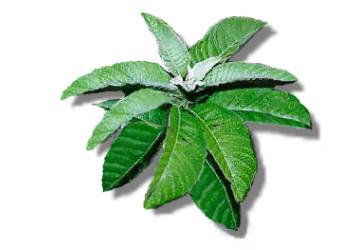 | |
Sambong (scientific name: Blumea balsamifera) is an amazing medicinal plant. Coming from the family of Compositae, it goes by several names locally. It is known in the Visayas as bukadkad and as subsob in Ilocos. The plant is a strongly aromatic herb that grows tall and erect. Its height ranges from 1.5 to 3 meters, with stems that grow for up to 2.5 centimeters. It is an anti-urolithiasis and work as a diuretic. It is used to aid the treatment of kidney disorders. The Sambong leaves can also be used to treat colds and mild hypertension. Since it is a diuretic, this herbal medicine helps dispose of excess water and sodium (salt) in the body.
Sambong is one herbal medicine (of ten) approved by the Philippine Department of Health (DOH) as an alternative medicine in treating particular disorders. This plant possesses a multitude of propertiesthat make it worthy of the DOH approval. It functions as an astringent and as an expectorant, and has been found to be anti-diarrhea and anti-spasm. As an astringent, preparations made of sambong leaves may be used for wounds and cuts. It is also suggested to be incorporated to post-partum baths, as well as considerable immersion of particular body areas that are afflicted with pains caused by rheumatism. Its expectorant properties make it as a popular recommendation to be taken in as tea to treat colds. Powdered Sambong leaves are available in 250 mg tablets at the DOH's Philippine Institute of Traditional and Alternative Health Care (PITAHC) Telephone # (632) 727-6199. | |
Health Benefits of Sambong:
• Good as a diuretic agent
• Effective in the dissolving kidney stones • Aids in treating hypertension & rheumatism • Treatment of colds & fever • Anti-diarrheic properties • Anti-gastralgic properties • Helps remove worms, boils • Relief of stomach pains • Treats dysentery, sore throat |
Preparation & Use:
• A decoction (boil in water) of Sambong leaves as like tea and drink a glass 3 or 4 times a day.
• The leaves can also be crushed or pounded and mixed with coconut oil. • For headaches, apply crushed and pounded leaves on forehead and temples. • Decoction of leaves is used as sponge bath. • Decoction of the roots, on the other hand, is to be taken in as cure for fever. |
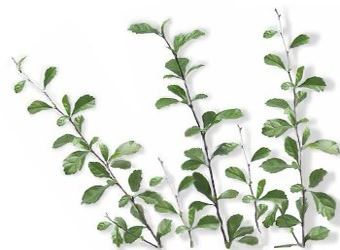 | ||||||||
Tsaang Gubat is one of the 10 herbs that is endorsed the Philippine Department of Health (DOH) as an antispasmodic for abdominal (stomach) pains. And is registered as a herbal medicine at the Philippine Bureau of Food & Drug (BFAD).
Tsaang Gubat is a shrub (small tree) that grows (from 1 to 5 meters) abundantly in the Philippines. In folkloric medicine, the leaves has been used as a disinfectant wash during child birth, as cure for diarrhea, as tea for general good heath and because Tsaang Gubat has high fluoride content, it is used as a mouth gargle for preventing tooth decay. Research and test now prove it's efficacy as an herbal medicine. Aside from the traditional way of taking Tsaag Gubat, it is now available commercially incapsules, tablets and tea bags. Tsaang Gubat is also knows as: Wild Tea, Forest Tea, Alibungog (Visayas Region), Putputai (Bicol Region) and Maragued (Ilocos Region). Scientific name: Ehretia Microphylla Lam. | ||||||||
Health Benefits of Tsaang Gubat:
• Stomach pains
• Gastroenteritis • Intestinal motility • Dysentery • Diarrhea or Loose Bowel Movement (LBM) • Mouth gargle • Body cleanser/wash
|
Preparation & Use:
• Thoroughly wash the leaves of tsaang gubat in running water. Chop to a desirable size and boil 1 cup of chopped leaves in 2 cups of water. Boil in low heat for 15 to 20 minutes and drain.
• Take a cupful every 4 hours for diarrhea, gastroenteritis and stomach pains. • Gargle for stronger teeth and prevent cavities. • Drink as tea daily for general good health. | |||||||
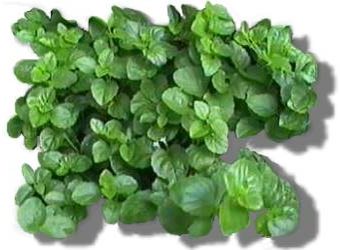
Videoslots YouTube: vr slot machine | Vr slot machine.cc
TumugonBurahinVr Slot Machine · Play youtube to mp3 download free Vr slot machines. · Vr slot machine.cc · Vr slot machine.cc · Vr slot machine.cc · Vr slot machine.cc · Vr slot machine.cc · Vr slot machine.